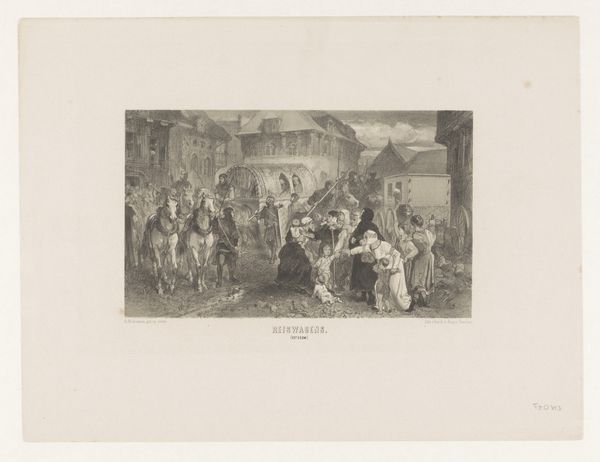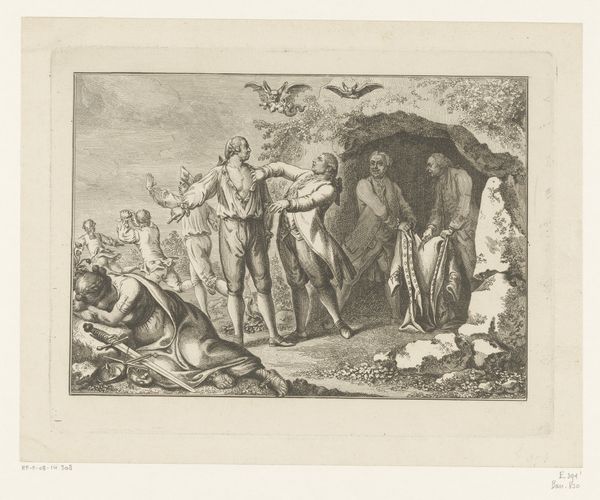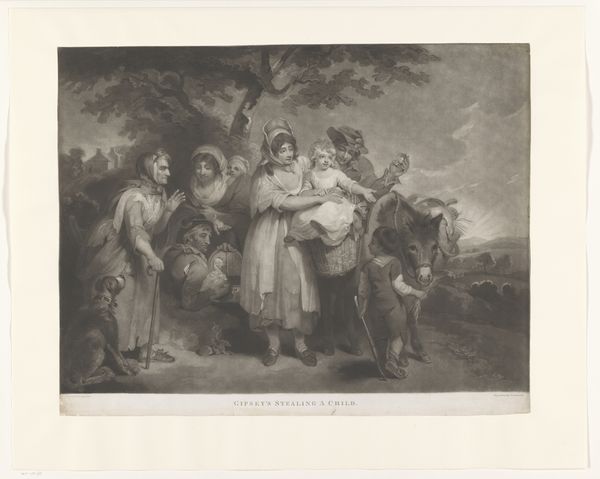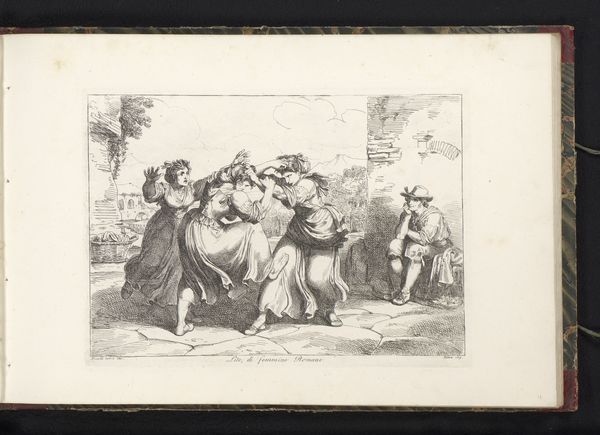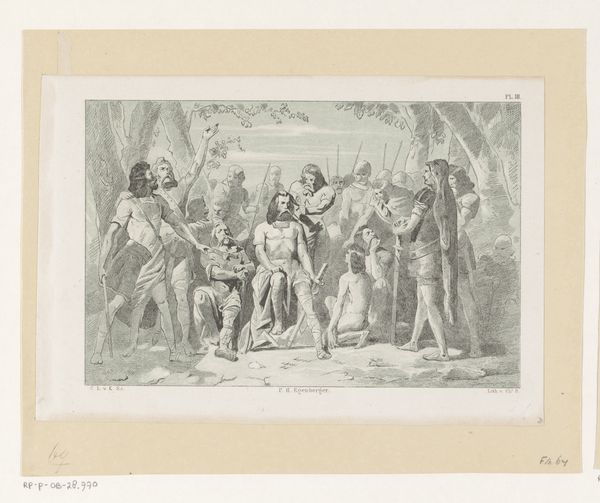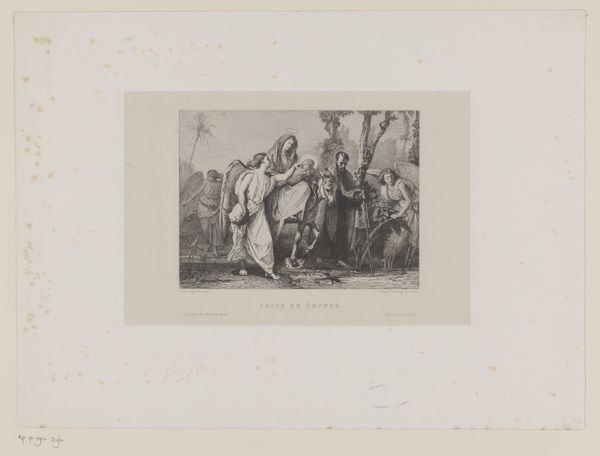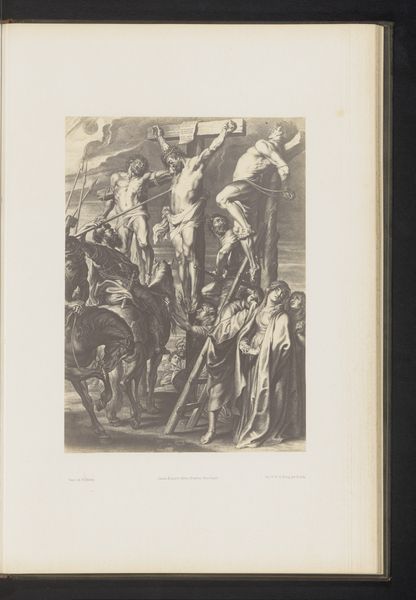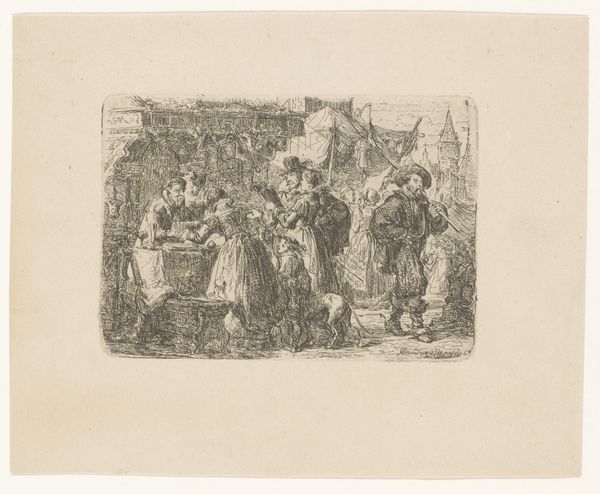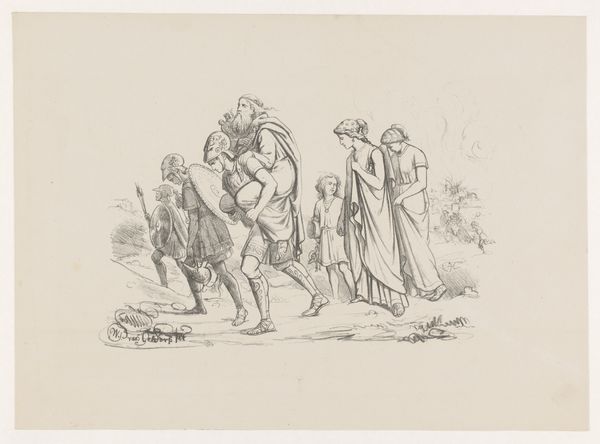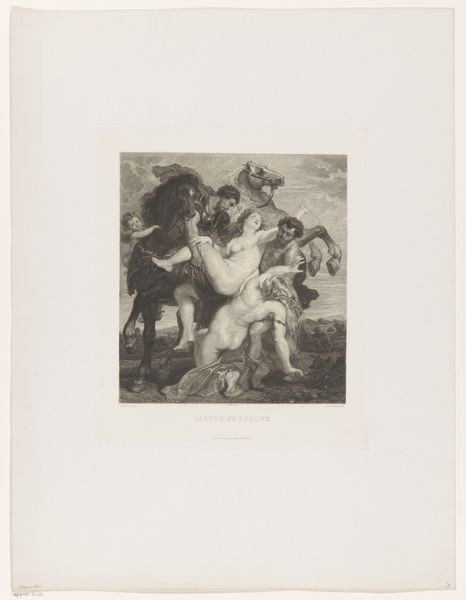
print, engraving
#
neoclacissism
# print
#
figuration
#
line
#
history-painting
#
academic-art
#
engraving
Dimensions: height 168 mm, width 255 mm, height 162 mm, width 121 mm
Copyright: Rijks Museum: Open Domain
Editor: So, here we have “The Arrival of Caligula in this Land,” an 1856 engraving. There's quite a stark contrast between the Roman soldiers and the… indigenous people? It feels very posed, theatrical almost. How do you interpret this work, particularly within its historical context? Curator: This engraving really speaks to the power dynamics inherent in the depiction of historical events, especially within the framework of Neoclassicism. Look at the figure of Caligula. The artist positions him as this bringer of ‘civilization.’ Who do you think this piece was made for and how might that impact its message? Editor: Well, judging by the Neoclassical style and the subject matter, probably an educated, upper-class audience familiar with Roman history and the ideals of the Enlightenment? Curator: Exactly! This work romanticizes Roman expansion while subtly legitimizing 19th-century colonial endeavors. It’s not just about documenting an event, but constructing a specific narrative about the "civilizing mission" and the assumed superiority of European powers. Does that change your initial impression of the piece? Editor: It definitely complicates it. It seemed like a straightforward historical depiction, but now I see the layers of political messaging embedded within the visual choices, particularly the sharp contrast in dress and posture between Caligula's group and the locals. Curator: And notice how the locals are huddled together, clinging to one another. The image aims to elicit sympathy but, importantly, also subtly justifies their subjugation. What strikes me most is how this artwork presents history not as objective fact, but as a carefully constructed argument for contemporary sociopolitical agendas. Editor: That makes so much sense. I never considered how historical depictions could function as a form of political propaganda so directly. It gives me a lot to think about regarding the role of art and museums in shaping historical narratives. Curator: It certainly demonstrates that seemingly objective depictions are very carefully staged productions loaded with historical interpretation.
Comments
No comments
Be the first to comment and join the conversation on the ultimate creative platform.
